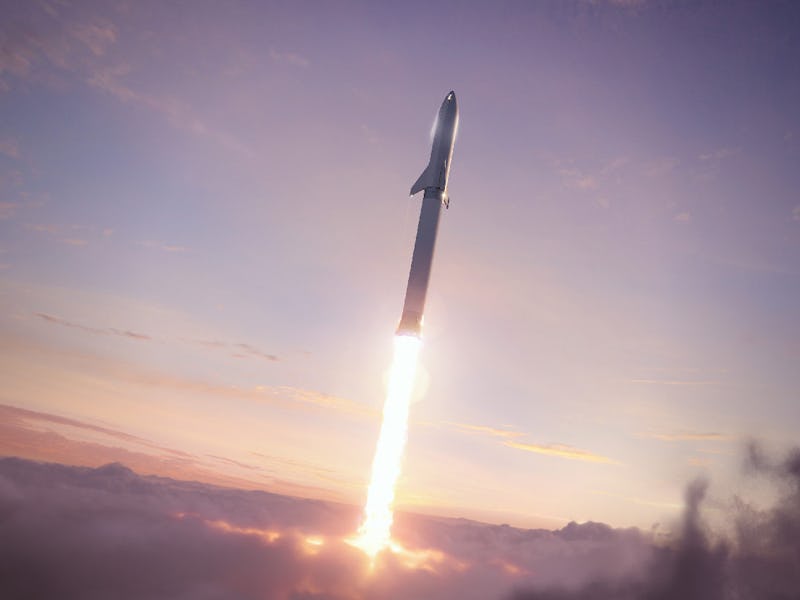SpaceX Starhopper: Elon Musk Reveals New Date for Crucial Test-Launch
If the launch is successful, it spells big news just a few weeks later.

The Starhopper, SpaceX’s test vehicle designed to pave the way for a trip to Mars, could soon embark on its first hover test.
The miniaturized version of the Starship, which has been used to test the under-development Raptor engines, is expected to complete a hover test as early as next week. CEO Elon Musk revealed the company’s new goal in a Twitter post Thursday.
The test could be a major step forward in the company’s plans to build the Starship, a machine expected to transport up to 100 people at once on a three-to-six-month journey to Mars and possibly beyond. The Starhopper used one Raptor engine to hop while tethered to the ground in April 2019.
Musk has previously stated that there will be a major Starship presentation a few weeks after the first successful hover test, which could lead to the first reveal of a full-sized rocket sometime in August.
The company’s test efforts came under question earlier this week when the Starhopper hit an anomaly at the Boca Chica test facility in Texas on Tuesday night. The day was oroginally scheduled to be the first hover test. Livestream footage from third-party enthusiasts showed the stainless steel construction erupting in a ball of flames. Fortunately, Musk confirmed that the vehicle made it out okay.
“Big advantage of being made of high strength stainless steel: not bothered by a little heat!” Musk explained.
The moment in action.
Musk explained that the fireball came from a post-test fuel leak, but confirmed that there was “no major damage.” Space reporter Eric Berger also claimed that there was “no significant damage” from the event, but “some minor repairs may be needed.”
SpaceX: One Small Hop for Starhopper, One Giant Leap for Mankind
The Starship was first unveiled in September 2017 as the “BFR.” It’s since undergone a series of design iterations, most notably switching to a Tintin-inspired stainless steel in September 2018. The original version stood 348 feet tall and offered around the same passenger cabin capacity as an Airbus A380. The booster uses 31 Raptor engines, and the engine a further seven, to create a liftoff thrust of 5,400 tons and lift the 4,400-ton vehicle.
Part of what makes the Starship so unique, bar its sheer size and power, is the Raptor engine. These use liquid oxygen and methane for fuel, instead of the rocket propellant used by the Falcon 9’s Merlin engines. That means humans can set up a propellant depot on Mars, harvest fuel from the air, refuel and return home. They could also move out further and create new depots, establishing a planet-hopping network.
Watch the company fire the Raptor engine for the first time:
The hover test could prove a crucial step on this journey. Where April’s tethered hop test jumped a few centimeters, the upcoming hover could launch around 20 meters up and sideways. It would set the Raptor engine’s thrusters to around 50 percent.
The journey is similar to how successful tests of the miniaturized Grasshopper paved the way for successfully landing the Falcon 9. Grasshopper successfully landed from 744 meters in October 2013. By 2017, SpaceX was attempting to and successfully landing 15 cores in one year.
If the Starhooper can hover, it could pave the way for a press conference a few weeks after. Musk has teased this conference before, and evidence suggests it would be used to unveil a full-size orbital prototype of the ship. If a hover takes place next week, that could mean SpaceX gives a first glimpse of a completed Starship as early as August — and could possibly reach orbit months after.
A secret second Starship was revealed to be under development in May, housed at a site in Florida. It is unclear which one would debut at the event.
The first full-scale mission could come as early as 2021. A SpaceX executive claimed earlier this month that discussions are ongoing with three telecoms firms, possibly to send up a satellite using the giant rocket. From there, a manned mission around the moon is scheduled for 2023.